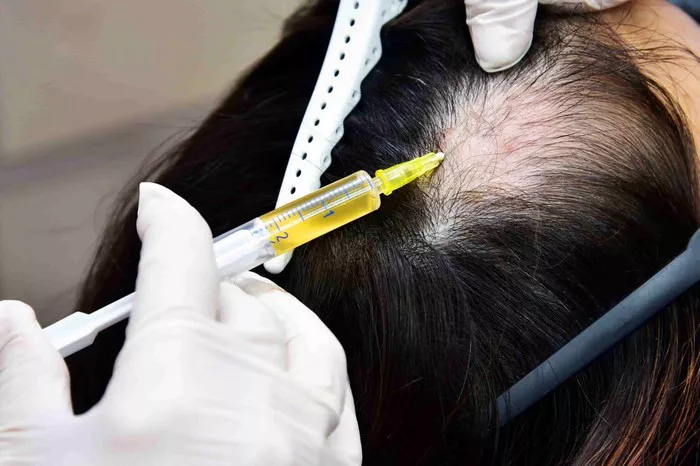Hair transplantation has become a popular and effective solution for individuals experiencing hair loss. The procedure involves transplanting hair follicles from a donor area to the balding or thinning regions of the scalp. While the surgery itself can yield impressive results, post-operative care plays a critical role in ensuring the success and longevity of the transplant. One of the most commonly recommended post-transplant treatments is minoxidil, a topical medication known for promoting hair growth. But what happens if you choose not to use minoxidil after a hair transplant? This article explores the potential consequences and the importance of minoxidil in the post-transplant journey.
The Role of Minoxidil in Hair Transplant Recovery
Understanding Minoxidil and Its Benefits
Minoxidil is an FDA-approved topical treatment that stimulates hair growth and slows down hair loss. It works by increasing blood flow to the hair follicles, prolonging the growth phase of the hair cycle, and revitalizing dormant follicles. For individuals undergoing a hair transplant, minoxidil is often prescribed to enhance the results of the procedure and support the healing process.
Why Minoxidil Is Recommended Post-Transplant
After a hair transplant, the newly implanted grafts are delicate and require time to establish a blood supply and integrate into the scalp. Minoxidil can accelerate this process by improving circulation to the transplanted area, which helps the grafts heal faster and grow more robustly. Additionally, minoxidil can prevent shock loss—a temporary shedding of existing hair that sometimes occurs after surgery.
Consequences of Not Using Minoxidil After a Hair Transplant
1. Delayed Healing and Graft Survival
One of the primary risks of skipping minoxidil after a hair transplant is delayed healing. Without the increased blood flow that minoxidil provides, the transplanted grafts may take longer to establish themselves in the scalp. This delay can compromise graft survival, leading to suboptimal results. While the grafts are designed to be permanent, their success depends on proper post-operative care, including the use of minoxidil.
2. Increased Risk of Shock Loss
Shock loss is a common phenomenon after a hair transplant, where the existing hair in the recipient area sheds due to the trauma of the procedure. Minoxidil helps minimize this shedding by strengthening the hair follicles and promoting faster recovery. Without minoxidil, the risk of shock loss increases, which can be distressing for patients who may interpret this shedding as a sign of transplant failure.
3. Slower Hair Growth
Minoxidil is known to accelerate hair growth by stimulating the hair follicles. When patients skip minoxidil, the growth of the transplanted hair may be slower, and it could take longer to see the full results of the procedure. This delay can be frustrating, especially for individuals eager to enjoy their new look.
4. Potential Thinning of Non-Transplanted Hair
Hair loss is often a progressive condition, and even after a transplant, the non-transplanted hair may continue to thin over time. Minoxidil helps slow down this process by strengthening the existing hair and preventing further loss. Without minoxidil, patients may notice thinning in areas that were not addressed during the transplant, which can affect the overall appearance and density of the hair.
5. Suboptimal Aesthetic Results
The ultimate goal of a hair transplant is to achieve a natural and aesthetically pleasing result. Skipping minoxidil can lead to uneven growth, patchiness, or reduced density in the transplanted area. This can undermine the success of the procedure and leave patients dissatisfied with their outcome.
Alternatives to Minoxidil After a Hair Transplant
While minoxidil is highly recommended, some patients may be unable or unwilling to use it due to side effects, allergies, or personal preferences. In such cases, there are alternative treatments that can support post-transplant recovery:
1. Finasteride
Finasteride is an oral medication that prevents hair loss by inhibiting the production of dihydrotestosterone (DHT), a hormone responsible for shrinking hair follicles. It is often prescribed alongside minoxidil to enhance hair growth and maintain results.
2. Low-Level Laser Therapy (LLLT)
LLLT is a non-invasive treatment that uses red light to stimulate hair follicles and promote growth. It can be used as a complementary therapy to support the healing process after a hair transplant.
3. Platelet-Rich Plasma (PRP) Therapy
PRP therapy involves injecting the patient’s own platelet-rich plasma into the scalp to stimulate hair growth and improve graft survival. It is a popular option for individuals seeking natural alternatives to minoxidil.
4. Nutritional Supplements
A balanced diet rich in vitamins and minerals, such as biotin, zinc, and vitamin D, can support hair health and growth. Supplements specifically designed for hair loss can also be beneficial.
The Importance of Following Post-Transplant Guidelines
A hair transplant is a significant investment of time, money, and effort. To maximize the results, it is crucial to follow the post-operative guidelines provided by your surgeon. These guidelines often include the use of minoxidil, as well as other recommendations such as avoiding strenuous activities, protecting the scalp from sun exposure, and maintaining a healthy lifestyle.
Consulting Your Surgeon
If you have concerns about using minoxidil or experience side effects, it is essential to consult your surgeon before discontinuing the treatment. They can provide personalized advice and suggest alternative options tailored to your needs.
Conclusion
Minoxidil plays a vital role in the success of a hair transplant by promoting graft survival, reducing shock loss, and accelerating hair growth. Skipping minoxidil can lead to delayed healing, slower growth, and suboptimal results. While there are alternatives available, minoxidil remains one of the most effective and widely recommended treatments for post-transplant care.
Ultimately, the decision to use minoxidil should be made in consultation with your surgeon, taking into account your medical history, preferences, and goals. By following your surgeon’s recommendations and committing to a comprehensive post-operative care plan, you can achieve the best possible results from your hair transplant and enjoy a fuller, healthier head of hair for years to come.
You Might Be Interested In:
- Do Hair Transplants Change Color?
- How Many Grafts Survive After a Hair Transplant?
- What Happens If I Sweat After Hair Transplant?


